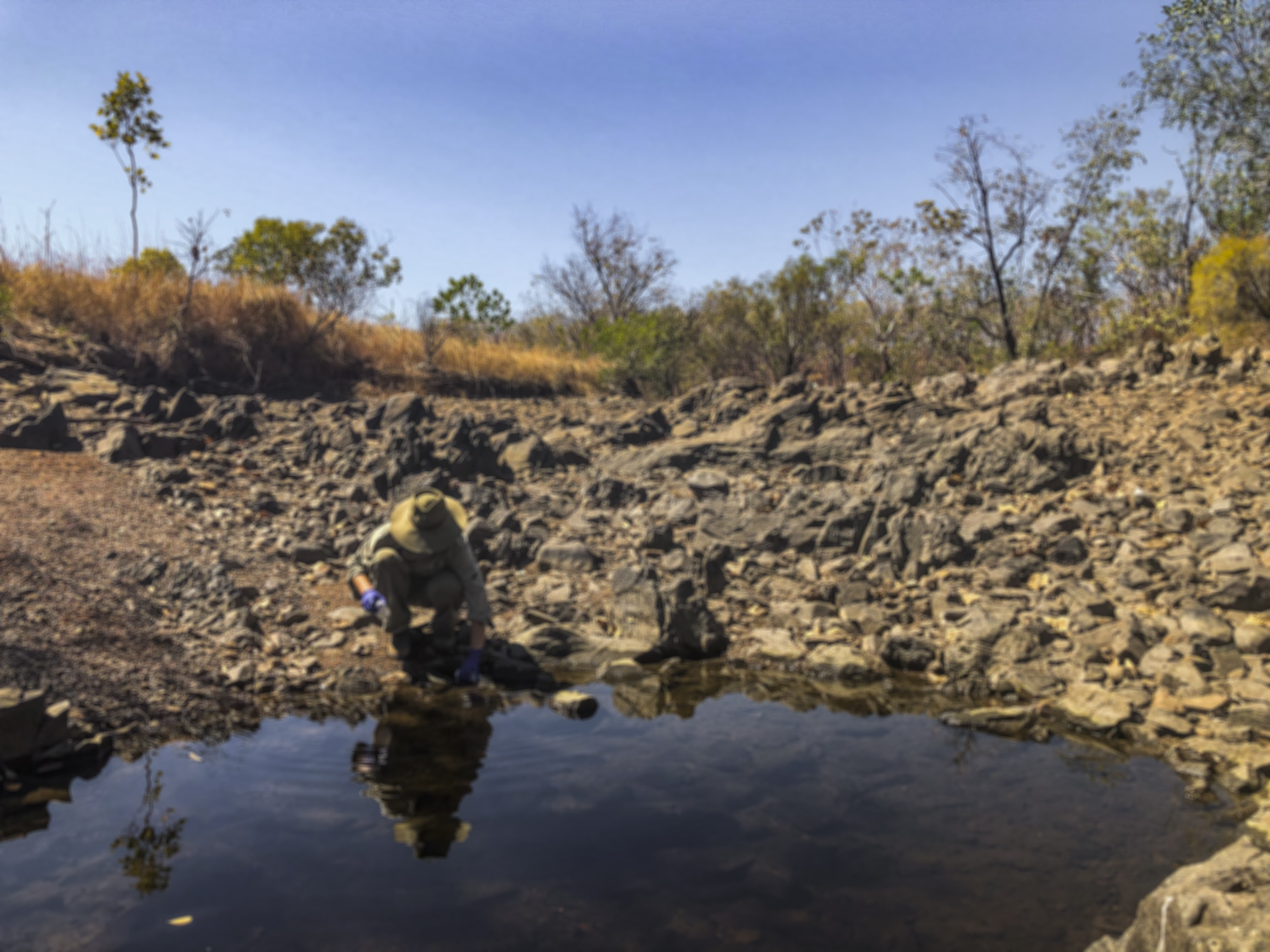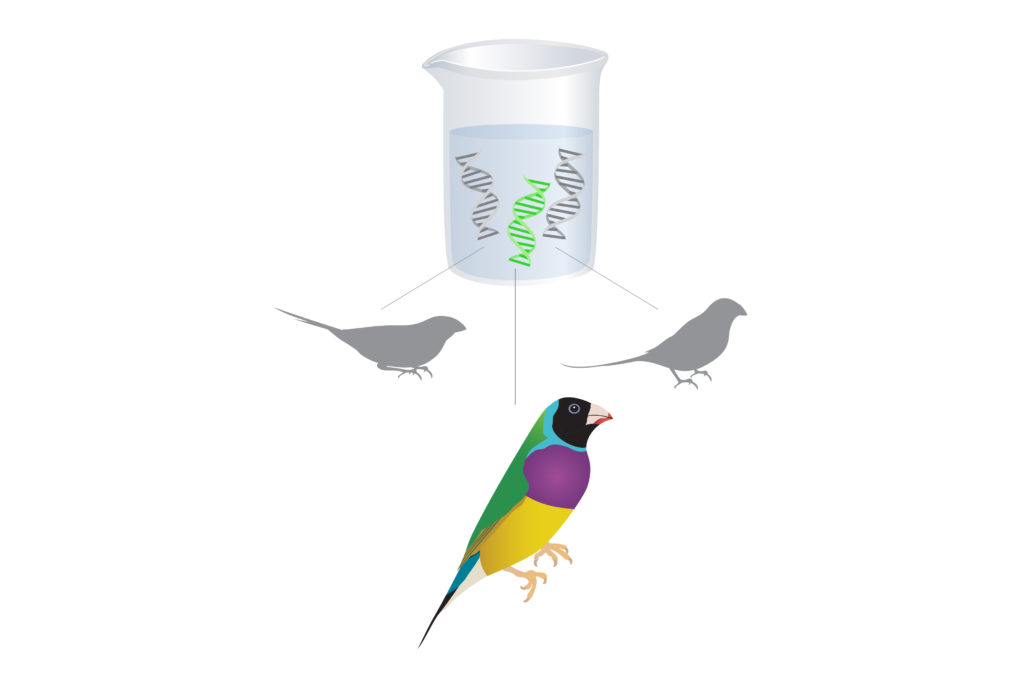15 November 2019
eDNA reveals where endangered birds of a feather flock together
For the first time, Australian scientists have shown that environmental DNA (eDNA) can be used to detect the presence of an endangered bird species simply by collecting a cupful of water from the pools where they drink.

Top image: Minden Photos/Alamy
Scrolling image: NT DEPWS
Hub researchers from Charles Darwin University collaborated with scientists from The University of Western Australia and the Northern Territory’s Department of Environment, Parks and Water Security to develop a genetic probe that targets and identifies the eDNA of the endangered Gouldian finch (Erythrura gouldiae), a rainbow-coloured grassfinch endemic to the savanna woodlands of northern Australia.

The study, published in Endangered Species Research, showed that Gouldian finch eDNA could be reliably detected from a 200 mL water sample collected from waterholes visited by the birds in the previous 48 hours. At waterholes with the highest number of birds, Gouldian finch DNA was still detectable 14 days after sample collection, regardless of whether the sample was stored at room temperature or refrigerated.
The research, led by Professor Karen Gibb of Charles Darwin University, is part of a larger Hub project that is developing eDNA techniques to detect endangered animals across the Top End.
Want to know more about the Resilient Landscapes Hub's activities and our research into practical solutions to environmental problems? Stay informed about activities, research, publications, events and more through the Hub newsletter.